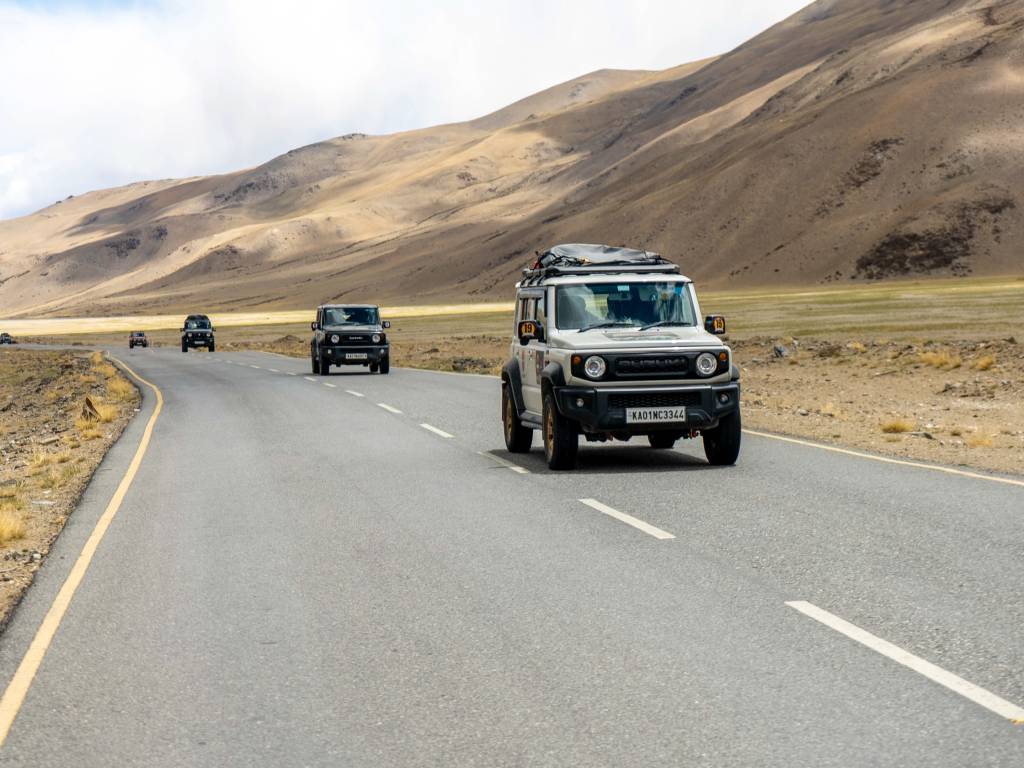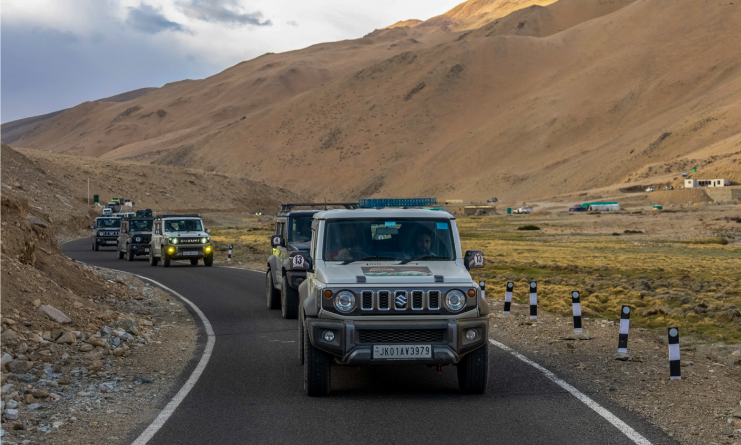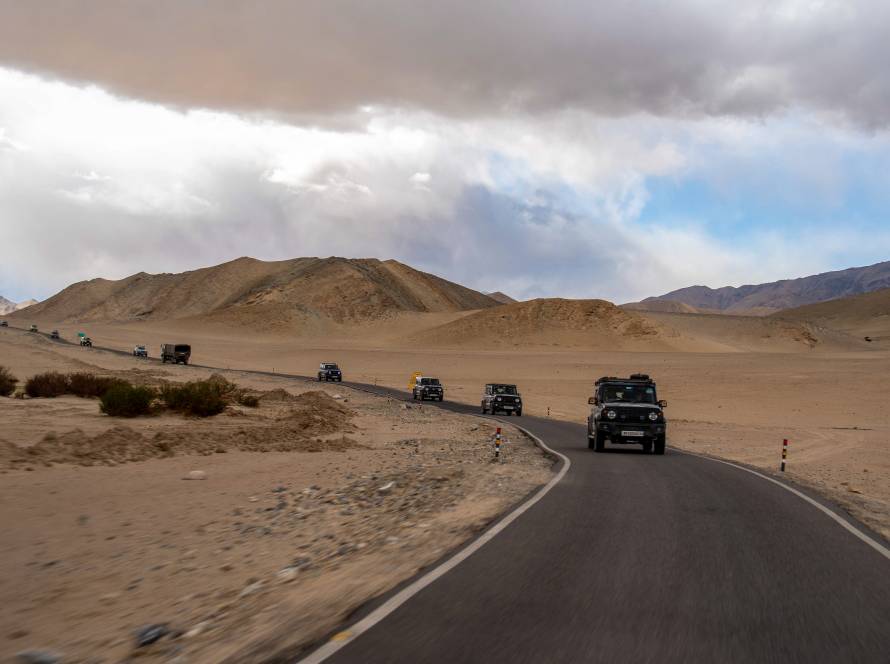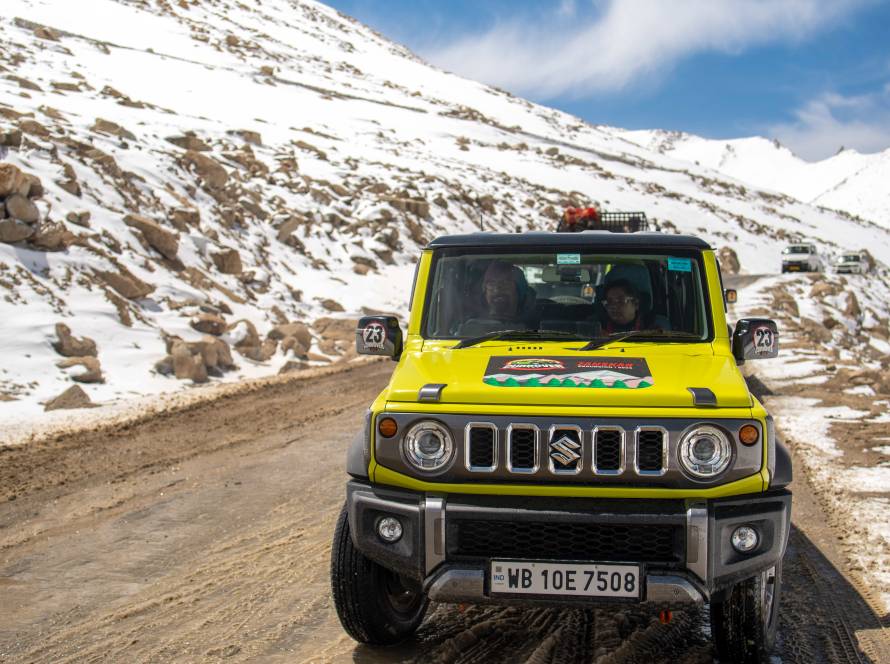Spiti Valley, Himachal Pradesh
For Jimny owners who crave adventure, Spiti Valley in Himachal Pradesh is nothing short of paradise. Known as “Little Tibet,” this high-altitude desert valley offers some of the most thrilling, challenging, and scenic off-road experiences in India. Narrow mountain passes, rocky riverbeds, and unpredictable weather make it a true testing ground for both driver and machine. And for the Suzuki Jimny — compact, reliable, and purpose-built for off-roading — Spiti is the ultimate playground.
Why Spiti Valley?
Unlike touristy hill stations, Spiti offers raw, untouched landscapes. The valley sits at an altitude of over 12,000 feet, with rugged terrain carved by the mighty Sutlej and Spiti rivers. It’s remote, harsh, and breathtakingly beautiful — everything a Jimny enthusiast looks for in an off-road destination.
The Jimny’s small footprint makes it perfect for maneuvering through narrow roads and hairpin bends, while its 4×4 capability handles slush, gravel, and water crossings with ease.


The Trail: What to Expect
Driving to Spiti is as much about the journey as the destination. The most popular route starts from Shimla → Kalpa → Kaza → Manali, covering winding roads, rocky ascents, and river crossings. Key highlights include:
- Kunzum Pass (15,000 ft) – A thrilling drive over snow-covered passes.
- Chandratal Lake – A detour worth every bump, with surreal turquoise waters.
- Pin Valley National Park – Off-beat trails with wildlife and dramatic landscapes.
- Kaza Town – The heart of Spiti, surrounded by monasteries and traditional villages.
The road conditions vary from paved tarmac to pure gravel, with stretches that test patience and driving skills.
Challenges on the Spiti Trail
Spiti isn’t a casual drive — it’s an expedition. Here are some challenges Jimny owners should be prepared for:
- Water Crossings: Snowmelt creates unpredictable streams, testing ground clearance and grip.
- Landslides & Rockfalls: Common in monsoon and post-winter months.
- High Altitude: Reduced oxygen affects both engines and drivers.
- Remote Locations: Limited fuel stations, repair shops, and mobile connectivity.
This is where the Jimny’s lightweight design, efficient engine, and strong suspension prove their worth.
Tips for Jimny Owners Planning Spiti
- Carry Essentials: Fuel cans, recovery gear, spare parts, and a puncture kit.
- Plan the Season: Best time to visit is June to September, when roads are open.
- Travel in Convoy: Having backup vehicles ensures safety in case of breakdowns.
- Acclimatize Slowly: Spend a day or two in Kalpa or Reckong Peo before ascending higher.
- Respect Local Culture: Monasteries and villages are part of Spiti’s soul — treat them with respect.
The Jimny Advantage in Spiti
While bigger SUVs often struggle in narrow mountain roads or soft slush, the Jimny shines with its compact build and agile handling. Its 4×4 low range helps crawl through rocks and water crossings, while its reliability ensures peace of mind in remote areas. For many owners, conquering Spiti isn’t just a trip — it’s a badge of honor that reflects the true spirit of the Jimny lifestyle.
Final Thoughts
Spiti Valley is not just a destination — it’s an adventure that pushes limits and rewards every mile with unforgettable views and experiences. For Jimny owners, it’s the perfect canvas to test the capabilities of their beloved 4×4 while living the spirit of exploration.
👉 Planning a trip to Spiti? Share your route, tips, or travel stories on the CurbOver Forum and inspire fellow Jimny adventurers!


